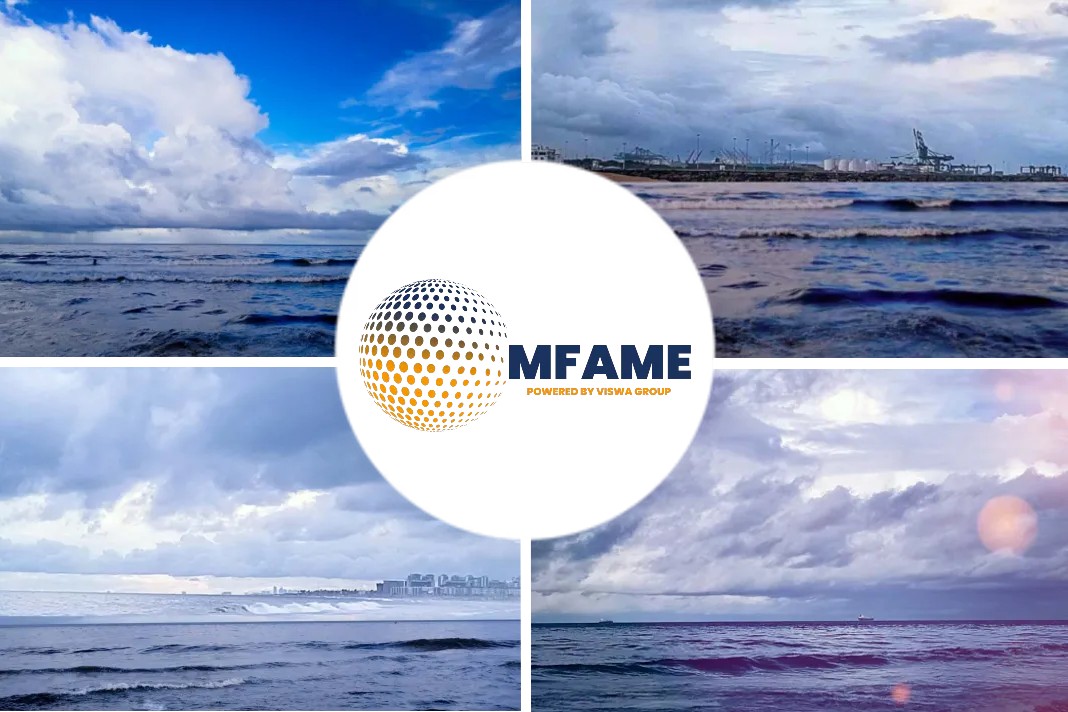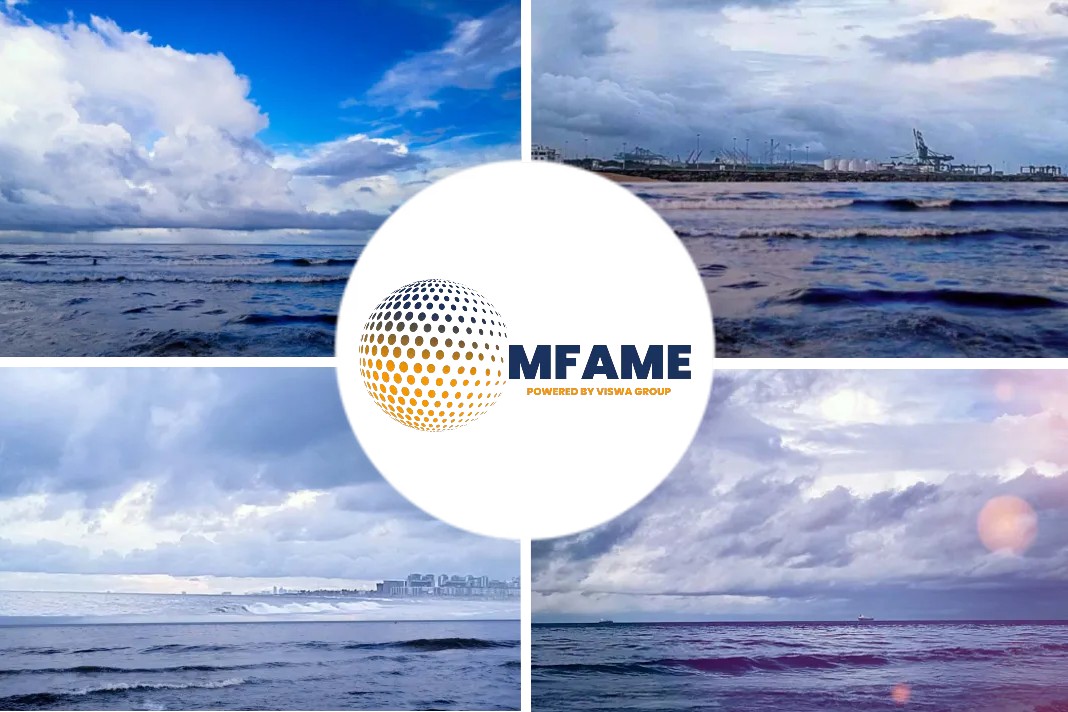• GoodBulk’s first quarter generated $15.4 million EBITDA and $3.1 million of net profit, after $10.2 million depreciation, resulting in earnings per share of $0.10.
• On 2 March 2021 the Board of Directors authorized the payment to Shareholders of $10.2 million ($0.34 per share) as capital repatriation.
• It ended the period with a cash balance of $24.8 million and net working capital of $22.5 million, totaling $47.3 million.
• It earned an average gross Time Charter Equivalent rate (TCE) of $14,592 per day on our Capesize vessels and $12,954 per day on our Panamax vessel.
• Averaged direct vessel operating expenses for the period of $5,602 per vessel per day.
GoodBulk Ltd. (“GoodBulk” or the “Company”) (N-OTC: BULK), an owner and operator of dry bulk vessels, announced its financial results for the first quarter ended 31 March, 2021, says a press release published by GoodBulk.
Company’s Strategy
On 26 April 2021 the Board of Directors authorized the payment to Shareholders of $10.2 million ($0.34 per share) as capital repatriation.
GoodBulk is a leading owner of dry bulk vessels executing a strategy combining low financial leverage with active portfolio management to optimize operational leverage to the dry bulk freight market. The Company’s strict financial discipline resulted in industry leading pure cash general and administrative expenses of $260 per vessel per day.
Market trade
For the quarter ending 31 March 2021, the Baltic Capesize Index averaged $17,126 per day, 275.7% above $4,558 per day for the same period 2020 and 1.1% above $16,944 per day for the quarter ending 31 December 2020. Q1 was the strongest first quarter since 2014 and the first time that a first quarter is higher than the preceding one since Q1 2009. The robust rates are correlated to strong iron ore exports from Brazil which reached 77.7 million tonnes in the first quarter, up 18.3% higher year-on-year. The increase in output from Brazil is mainly attributed to increasing exports from Brazilian miner, Vale, that resumed operations at some of its complexes which had been impacted by the dam collapse in 2019 as well as to lower rainfall in January 2021. Iron ore exports in March out of Brazil and Port Hedland, Australia, from where around two thirds of Australia’s iron ore exports are shipped from, registered strong month-on-month increases, with the two countries combined bringing 14.8 million tonnes more to market for the, predominantly, Capesize trade.
Global Steel’s New Record
Global steel demand growth continues to be led by China where production over the first quarter increased by about 15%, setting a new record, and steel prices as well as mill margins are hovering at over 10-year highs. Apart from good demand, China’s environmental agenda is intensifying steel capacity curbs which have not translated into production cuts yet but instead are further boosting the price rally.
Iron Ore Prices
Iron ore prices too have rocketed upwards which will be an encouragement to miners to step up output which will add further impetus to the iron ore trade this year. In the first quarter of 2021, China imported 20.9 million tonnes more iron ore up 8% year-on-year.
Vessel Rates
The Panamax and Supramax sectors have seen freight rates reach ten-year highs in March and April 2021 as coal and grain demand have also been firm. Over the first quarter, China imported 50.1% more grains and oilseeds (comprised of corn, wheat and soybeans) and despite Q1 being a weaker quarter than last year for coal imports, March were up by close to 33% month-on-month as the country has been trying to bridge its domestic coal shortage.
With the orderbook at historic lows, rebounding demand for minor bulks and coal as well as steady growth in iron ore and grain volumes, the dry bulk market is poised to enjoy a strong freight environment over 2021 and into 2022.
2020 VS 2021 Q1 Results
For the three months ended 31 March 2021, the Company reported revenues and net other operating income (expenses) of $49.0 million, and a net profit of $3.1 million generating earnings per share of $0.10 based on 30,020,967 weighted average number of shares outstanding. This result compares with a net loss of $5.1 million for the first quarter of 2020. Ship ownership days were 2,070 in the first quarter of 2021, less than 2,302 in the first quarter of 2020 as a result of the disposal of three Capesize vessels over the course of 2020 (the M/V Aquacarrier, the M/V Aquajoy and the M/V Aquacharm). In 2021 ownership days are expected to decrease to an estimated 8,395, from 8,872 in 2020, as a result of the aforementioned dispositions.
The Company earned an average gross TCE of $14,592 per day on its Capesize vessels and $12,954 per day on its Panamax vessel for the three months ended 31 March 2021. Comparatively for the three months ended 31 March 2020, the Company earned an average gross TCE of $10,851 per day on its Capesize vessels and $1,864 per day on its Panamax vessel. During the first quarter of 2021, sixteen of the Company’s Capesize vessels were traded on the spot market employed in Capesize Chartering Ltd. (“CCL”) via the CTH Capesize Revenue Sharing Agreement (“Capesize RSA”); the Panamax vessel was also traded on the spot market whilst six Capesize vessels were employed on period charters.
First Quarter Net Result
Net result for the three months ended 31 March 2021 included non-cash depreciation expense of $10.2 million. Direct vessel operating expenses for the period totaled $11.6 million or $5,602 per vessel per day.
G&A Expenses
General and administrative expenses (“G&A”) for the three months ended 31 March 2021 were $1.2 million, or $594 per vessel per day, compared to $401 per vessel per day for the same period in 2020. Pure cash G&A were $260 per vessel per day.
Did you subscribe to our daily newsletter?
It’s Free! Click here to Subscribe!
Source : GoodBulk





















![[FAQ] What Is Greenwashing & How To Spot It?](https://mfame.guru/wp-content/uploads/2021/07/greenwashing_copy_1068x712-80x60.jpg)